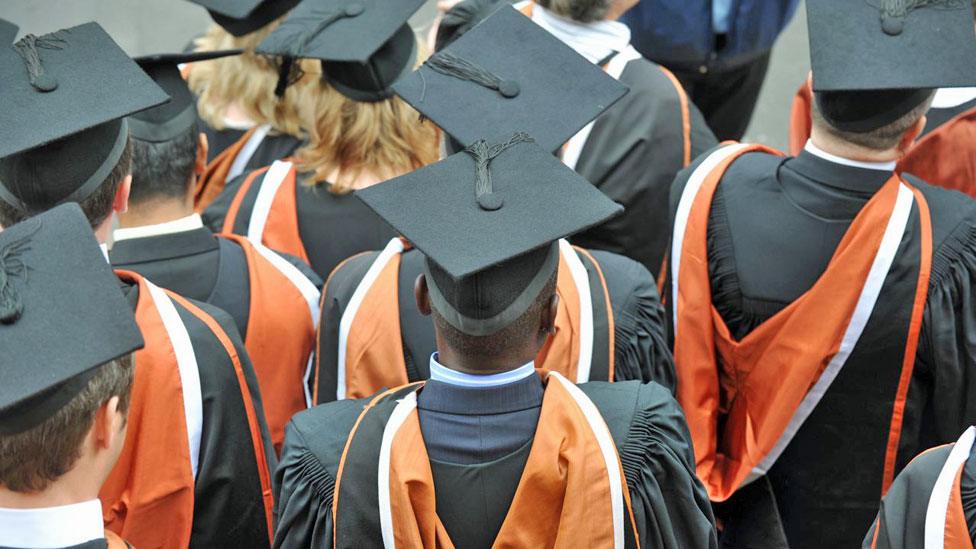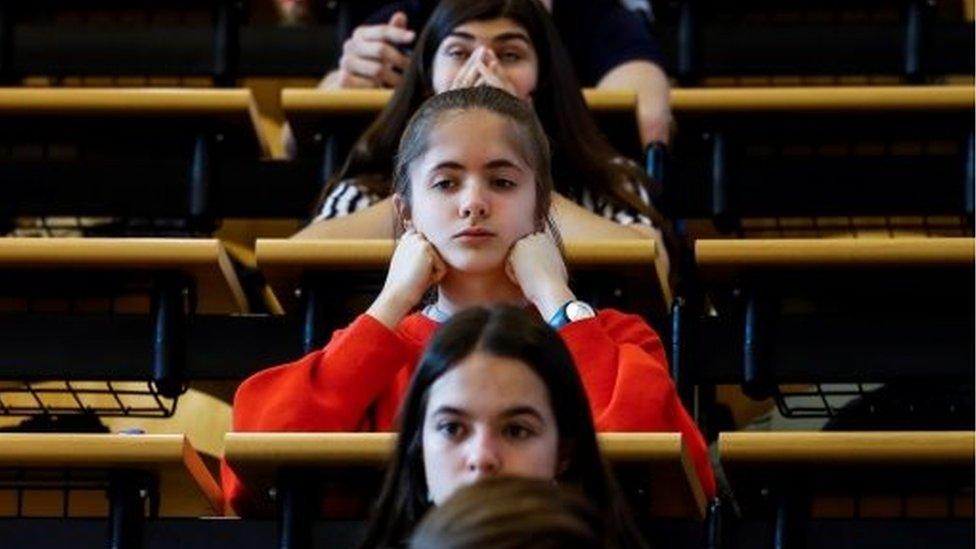'Grade inflation' in top degree grades stopping
- Published
- comments

The sharp increase in university students in the UK getting top degree grades seems to have stalled, according to annual official figures.
It follows warnings from ministers of the need to prevent "grade inflation" devaluing degrees.
The latest figures show 28% of students were awarded first class degrees in 2018-19 - the same as the year before.
England's higher education watchdog, the Office for Students, had attacked "unexplained" increases in top grades.
Nicola Dandridge, chief executive of the Office for Students (OFS), said the latest figures showed an end to successive increases in first class degrees every year since 2011.
Over those years the proportion of students getting a first had risen by 80%.
"Grade inflation risks undermining public confidence in higher education for students, graduates and employers alike," said Ms Dandridge.
The latest figures from the Higher Education Statistics Agency show 28% of candidates were awarded first class degrees, 48% upper second, 19% lower second and 4% third class - with all these the same as the previous year.
Education Secretary Gavin Williamson said grade inflation was "something we had to stop" to protect the reputation of the UK's universities.
"We will reverse that trend," he said, warning there had to be public confidence in "what grades mean".
Nick Hillman, director of the Higher Education Policy Institute, suggested the stalling in top grades reflected the pressure put on universities.
"As universities award their own degrees, and despite external examination arrangements, decisions on how many top grades to award are made at an institutional level - but institutions cannot ignore outside interests," said Mr Hillman.
"The higher education sector is, in effect, going through the same cycle that A-levels went through, with lots of inflation followed by a period of reflection."

The number of students in higher education also reached a record high of 2.38 million - up by about 40,000 on the previous year.
The number of female students has continued to climb more quickly than for men - with 57% of students female in 2018-19.
It means there are about 340,000 more women in higher education than men.
In terms of ethnicity among UK students, the biggest increase in recent years has been Asian students - with numbers up by 20% since 2014-15.
The number of black students has risen by 17% across those years - but for white students, the numbers are below where they stood five years ago.
The Reform think thank said the figures were "dire" in terms of widening access into university for disadvantaged youngsters.
"Just 12% of students came from came from low participation neighbourhoods in 2018-19 - the same proportion as in 2014-15," said researcher Imogen Farhan.
- Published11 July 2019

- Published19 December 2018

- Published21 June 2018
